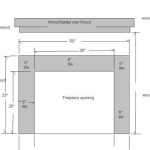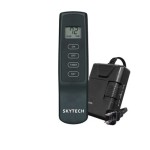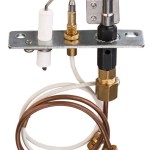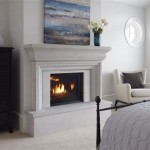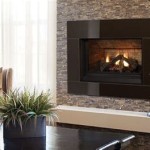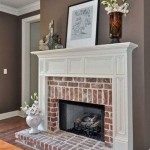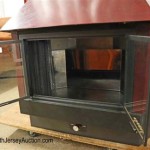Understanding Fireplace Insert Blower Fans
Fireplace insert blower fans are supplemental components designed to enhance the heating efficiency of fireplace inserts. While fireplace inserts themselves are substantially more efficient than traditional open fireplaces, they still rely heavily on radiant heat. Radiant heat warms objects directly in its path, but it doesn't circulate warm air effectively throughout a room or a home. This is where a blower fan becomes a valuable addition.
A blower fan, also known as a convection fan or a circulating fan, is typically installed within the firebox or surrounding the exterior of the fireplace insert. Its primary function is to draw cool air from the room, pass it over the heated surfaces of the insert, and then force the warmed air back into the room. This forced convection dramatically improves heat distribution, allowing the user to warm a larger area more quickly and efficiently. Without a blower fan, much of the heat generated by the insert would rise to the ceiling or remain concentrated near the fireplace.
Choosing the right fireplace insert blower fan requires careful consideration of several factors, including the size and model of the fireplace insert, the size of the room that needs to be heated, and the desired level of noise. Different blower fan models are designed for different heat outputs and airflow rates, so it's crucial to match the fan to the specific application.
Enhanced Heat Distribution and Efficiency
The most significant benefit of a fireplace insert blower fan is its ability to significantly improve heat distribution throughout a living space. Without a blower, the heat from a fireplace inserts tends to remain localized near the firebox. This creates uneven heating, with areas close to the fireplace becoming uncomfortably warm while other parts of the room remain relatively cool. A blower fan mitigates this problem by actively circulating the heated air, promoting a more even temperature gradient throughout the room. This efficient heat distribution allows users to experience consistent warmth regardless of their location within the room.
The increased efficiency offered by a blower fan translates directly to cost savings. By distributing heat more effectively, less fuel is needed to maintain the desired temperature. This is especially important in larger homes or open-concept living spaces, where heating a single area can be challenging. The blower fan helps to move the heat to where it's needed, reducing the reliance on the fireplace insert to generate excessive heat, thus conserving fuel. Over the long term, these savings can offset the initial cost of the blower fan and its installation.
Furthermore, improved heat distribution can enhance overall comfort. Eliminating cold spots and temperature fluctuations provides a more comfortable and consistent living environment. This is particularly beneficial during colder months where efficient and reliable heating is essential for maintaining a comfortable indoor temperature. The even distribution of heat reduces the need to adjust thermostat settings frequently, ensuring that all areas of the room remain at a comfortable temperature.
Types of Fireplace Insert Blower Fans
Fireplace insert blower fans come in various types, each with its own design and method of operation. The most common types include tangential blowers, centrifugal blowers, and axial fans. Tangential blowers, also known as crossflow fans, are characterized by their long, cylindrical shape and are often used in applications requiring a wide, even airflow. These blowers excel at moving air across a wide surface area and are particularly suitable for fireplaces with large fireboxes.
Centrifugal blowers, also known as squirrel cage fans, use a rotating impeller to draw air in and expel it at a 90-degree angle. These blowers are known for their high pressure output and are often used in applications where air needs to be moved through ductwork or against resistance. Centrifugal blowers are often used in fireplace inserts that require a more powerful airflow to overcome obstructions within the firebox.
Axial fans resemble traditional propeller fans and move air in a straight line. While they are generally less powerful than tangential or centrifugal blowers, axial fans can be suitable for smaller fireplace inserts with less restrictive airflow paths. Their compact design and relative simplicity can make them an economical option.
In addition to the type of blower, the speed control mechanism can also vary. Some blower fans have a single speed setting, while others offer multiple speed settings or even variable speed control. Variable speed control allows the user to adjust the airflow rate to match the heating requirements of the room, providing greater flexibility and control over the heat output.
Choosing the right type of blower fan depends on the specific characteristics of the fireplace insert and the desired performance. Factors such as the size of the firebox, the complexity of the airflow path, and the desired noise level should all be considered when selecting a blower fan.
Installation and Maintenance Considerations
The installation of a fireplace insert blower fan typically involves mounting the fan within or around the fireplace insert and connecting it to a power source. Depending on the model, the blower fan may be installed inside the firebox, behind the firebox, or underneath the fireplace insert. Some blower fans are designed as plug-and-play units, while others may require wiring to an electrical outlet or a dedicated circuit.
It is crucial to follow the manufacturer's instructions carefully during installation to ensure proper functionality and safety. Incorrect installation can lead to reduced performance, increased noise, or even electrical hazards. If the user is not comfortable with electrical wiring or mechanical assembly, it is recommended to hire a qualified technician to perform the installation.
Regular maintenance is essential for ensuring the longevity and optimal performance of a fireplace insert blower fan. The primary maintenance task is cleaning the fan blades and motor housing to remove dust and debris. Dust accumulation can reduce airflow and cause the fan to overheat, leading to premature failure. Cleaning should be performed periodically, depending on usage and environmental factors.
In addition to cleaning, it is also important to inspect the fan for any signs of wear or damage. Check for loose connections, frayed wires, or damaged fan blades. Replace any worn or damaged components promptly to prevent further problems. Lubricating the fan motor can also help to reduce noise and extend its lifespan. However, it is essential to use a lubricant specifically designed for electric motors to avoid damaging the motor windings.
Proper installation and regular maintenance are key to maximizing the benefits of a fireplace insert blower fan and ensuring its safe and reliable operation.
Another crucial aspect to consider when choosing a blower fan is its noise level. Some blower fans can be quite noisy, especially at higher speeds. This can be a significant drawback, particularly in quiet environments or bedrooms. Look for blower fans that are specifically designed for quiet operation. These models often incorporate noise-dampening materials and optimized fan blade designs to minimize noise levels. Check product specifications for decibel (dB) ratings to compare the noise levels of different models. Lower dB ratings indicate quieter operation.
The power consumption of a blower fan is another factor to consider, especially for users who are concerned about energy efficiency. Most blower fans consume a relatively small amount of power, but the exact wattage can vary depending on the size and type of fan. Look for models with energy-efficient motors to minimize power consumption. LED indicator lights, and automatic on/off activation based on the fireplace insert's temperature, are features that can also help save energy.
Finally, consider the warranty offered by the manufacturer. A longer warranty indicates greater confidence in the product's quality and durability. It also provides peace of mind in case of any defects or malfunctions. Read the warranty terms carefully to understand what is covered and what is not. Pay attention to the claim procedures in case warranty service is needed.
By carefully considering these factors, users can select a fireplace insert blower fan that meets their specific needs and provides years of reliable and efficient heating.

Fireplace Efficiency Blowers And Why You Should Have One

Fireplace Blower Fans What You Need For Heat Full Service Chimney

Noisy Gas Fireplace Blower Here S How To Replace It Diy

Fireplace Blowers Explained How Fans Work Regency

Oa10505 130 Cfm Blower Fan

Fireplace Blower Fan For Regency Insert 910 157 P Hampton Hi300 H2100 I2400 Wo

Why Do I Need A Blower Fan On My Fireplace We Love Fire

What Are Fan Assisted Fireplaces Like How Do These Fans Work Panadero

Home Complete Heat Powered Wood Burning Stove Fan Hw0200206 The Depot

4 Blade Heat Powered Stove Fan For Wood Log And Pellet Burners To Circulate Warm Air Silent Operation 547054nhm The Home Depot
Related Posts

